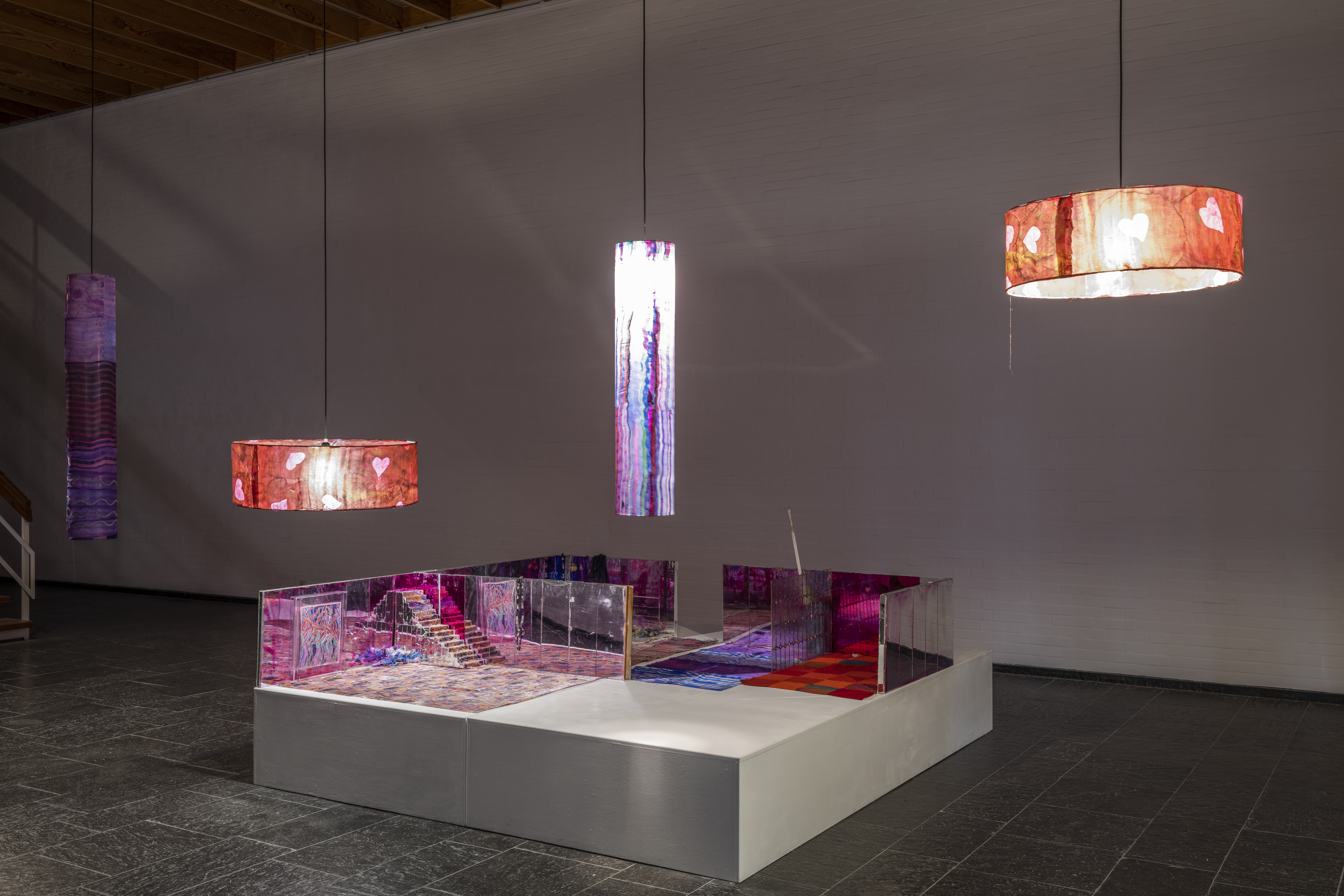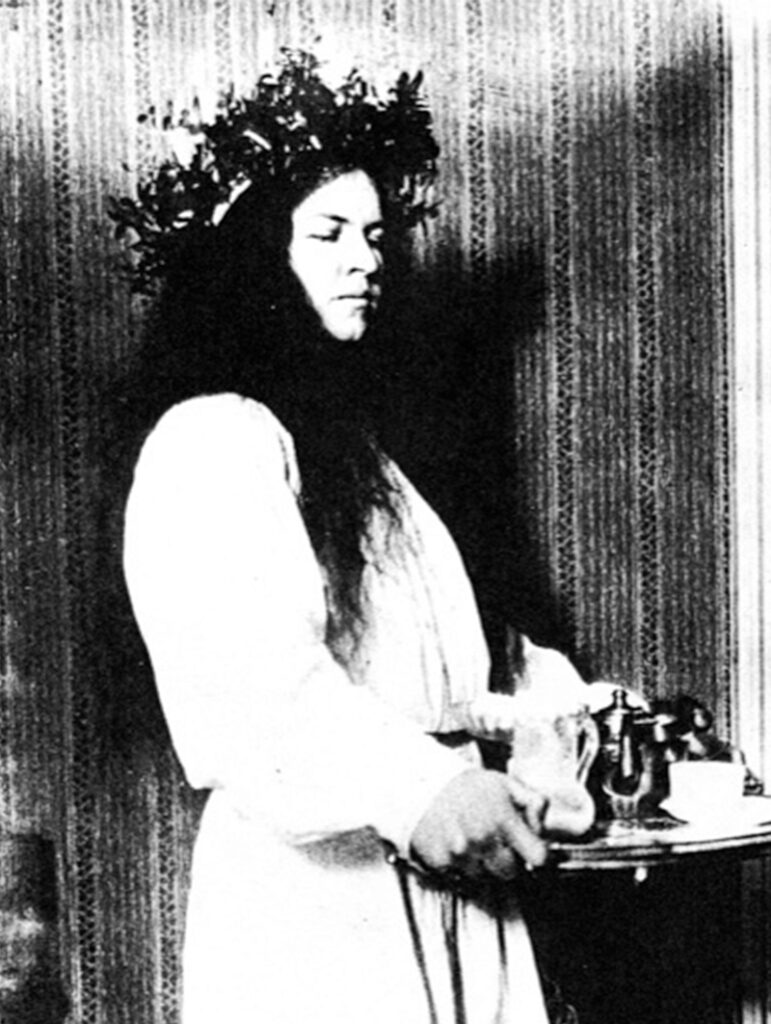
Houses of Tove Jansson exhibition in Paris shows Jansson’s work in dialogue with contemporary artists

Tove Jansson’s work is showcased in dialogue with contemporary artists at the Houses of Tove Jansson exhibition, which opens in Paris on September 29th. In this article, the curators share how they approached presenting Tove Jansson in a new light.
The Houses of Tove Jansson exhibition in Paris draws from Jansson’s entire oeuvre, spanning her 70-year-long career. It also includes photographs and artworks made by Jansson’s family members.
First Tove Jansson exhibition in Paris
Houses of Tove Jansson presents her work in dialogue with works by a select group of contemporary artists. The group includes Carlotta Bailly-Borg, Anne Bourse, Vidya Gastaldon, Elmgreen & Dragset, Ida Ekblad, Emma Kohlmann, and Cerith Wyn Evans.
The curators Sini Rinne-Kanto and Tuukka Laurila from The Community have immersed themselves in Tove Jansson’s work for the past two years. They have also selected the contemporary works shown alongside Jansson’s and share their thoughts on the curation below.
Carlotta Bailly-Borg’s connection to Tove Jansson’s murals
When selecting the contemporary artists whose works are exhibited alongside Tove Jansson’s, the curators wanted to highlight Jansson’s life as an independent, queer modern woman.
“Many of the artists explore these themes in their work, interweaving other connections to Tove’s life, way of living, and bold choices she made during her lifetime.”
Several of the contemporary works in the show include references to the history of literature and painting.

The curators can easily see connections between the contemporary artists and Tove Jansson.
“For example, the painterly work of French artist Carlotta Bailly-Borg often features marginal, genderless characters that remind us of the Moomins. Her work lingers between abstraction and figurative language, occasionally flirting with surrealism, as did Tove’s painterly influences. She has recently worked on a large-scale mural painting, as seen on the wall of the Pernod Ricard Foundation in Paris, which connects her with Tove’s practice when she worked on public commissions and did large-scale murals after World War II.”
Unique capsule collections inspired by Tove Jansson
To celebrate the opening of the exhibition, unique capsule collections inspired by Tove Jansson will be sold exclusively at the exhibition venue.
The collections include nine products by D’heygere, Vitelli, Ana Kraš x CC Tapis and Sabine Marcelis, who have created one-of-a-kind items inspired by Jansson’s life and work.
The collections can be experienced in a unique setting within the exhibition, which doubles as a reading area. Here, the visitors can study books from Jansson’s private library and buy a selection of her literature in addition to the works in the capsule collection.
The carefully chosen selection of mainly Nordic literature from Jansson’s bookshelf is curated in collaboration with Bokbar, a Nordic bookshop and coffee shop in Paris’ 20th arrondissement.
Exhibition catalogue features early short stories for the first time in English
A 288-page publication, “Houses of Tove Jansson” is conceived as an extension of the exhibition. The book includes a selection of letters and short stories penned by Tove Jansson. Some are from her time in Paris, and appear in English for the first time in the catalogue.
The short stories Quatz’ Arts and The Beard (1938), depicting her colourful and vivid experience at the eminent École des Beaux-Arts in Paris, appear in English for the first time in the catalogue as translated by Sarah Death and the essay The Island from 1961 is translated into English by Thomas Teal.
Loosely inspired by Jansson’s novel “The Summer Book,” author Kate Zambreno has written a fictive story, “Summer,” for the catalogue. Writer Hannah Williams writes about the queer side of Jansson’s life in the essay, “Just Linger for the Pleasure of It.” The comprehensive catalogue also features an introduction to the exhibition by curator Sini Rinne-Kanto and a foreword by Sophia Jansson, Tove Jansson’s niece.
Alongside the new contemporary context, Houses of Tove Jansson dives deep into the work and life of the artist and author herself.
” We wanted people to discover Tove first and foremost as a fine artist rather than a children’s author ”
How does one choose what to show of an artist as versatile as Tove Jansson?
“At the beginning of the curatorial process, we focused on Tove’s painterly practice and how it evolved from figuration towards more abstract tendencies towards the end of her career. We wanted people to discover Tove first and foremost as a fine artist rather than as a children’s author and the creator of the Moomins.”

But throughout the process, the curators kept coming back to the fact that the Moomins are inseparable from Jansson’s universe and that it is necessary to highlight the Moomins extensively.
One example is how the early Snork-like figures appeared in the covers for the magazine Garm or in her mural paintings, which were not Moomin works per ce.
“Painting – or image – and words were equally vital to her and in a perfect balance, so it was essential for us to feature these two elements.“
Houses of Tove Jansson features works that have not been exhibited
“Tove was an artist, political cartoonist, author, and Moomin creator but also a businesswoman. This multidisciplinary aspect of hers has been fascinating to explore and fathom.”
“In the process, we were interested in works not featured in exhibitions before. We spent a considerable time in the archives, in Tove’s atelier and her Klovharun cottage, exploring elements – works, ephemera, and documentation – that have been less discussed in previous exhibitions.”
Mental and physical rooms
As the exhibition title suggests, the curators were interested in different spatial elements in Tove’s life and in narrating a story throughout these spaces – the atelier, Paris, Klovharun, and the Moominhouse, among others.
“In the curatorial research process, we came across some fascinating places that we hadn’t heard of before and connected them to Tove”, Rinne-Kanto and Laurila say.
Le Club du Sauna – a pop-up nightclub by Jansson’s former lover
One place the curators want to highlight is Le Club du Sauna, a nightclub established by Vivica Bandler (Tove’s friend and former lover) in 1952 on the occasion of the Olympic Games in Finland. The club was decorated by Tove Jansson, and was open uniquely for high-profile guests visiting Helsinki during the Olympic games.
Exhibition hosted in a former print house in Paris
Houses of Tove Jansson takes place in a former print house in the 11th arrondissement of Paris. The concept of spaces and rooms has been important in the curation and is also reflected in the physical layout of the exhibition.
Each section, or room, melds elements from her personal life with her artistic output. Different physical spaces were important to Tove Jansson. Many times her work featured physical spaces, such as still-lifes, urban scenes, landscapes or different interiors.
She often painted rooms – either her own atelier space or hotel rooms where she stayed during her travels.
Houses of Tove Jansson exhibition Paris – tickets and further information
Houses of Tove Jansson opens in Paris, France, on September 29 during Paris Fashion Week and extends through Paris+, par Art Basel, to October 29. The exhibition is curated by The Community, a Parisian art institution, in collaboration with Tove Jansson’s estate and Moomin Characters.
The exhibition space is at Espace Mont-Louis, 8 Impasse de Mont Louis in the 11th arrondissement of Paris. Houses of Tove Jansson will be free but require registration.
Read more about Tove Jansson’s Paris in our series of articles:














